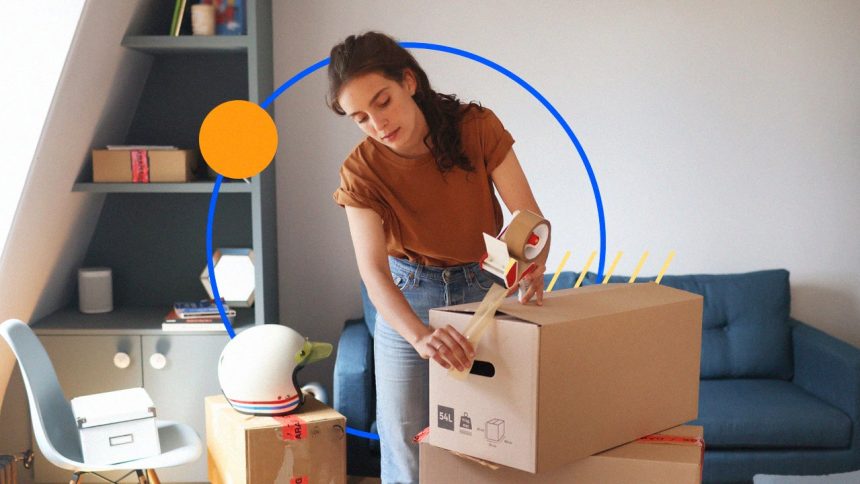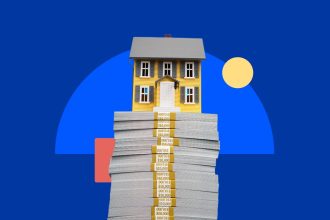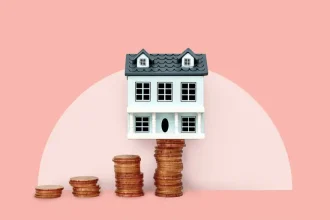Delahaye/ Getty Images; Illustration by Austin Courregé/Bankrate
Key Takeaways
- Down payment assistance (DPA) programs provide eligible homebuyers with loans or grants to help cover down payment and closing costs.
- These programs are typically reserved for first-time homebuyers or buyers with lower to moderate incomes for their area.
- Many down payment assistance programs are available through state housing finance agencies. Some major cities, nonprofits and even mortgage lenders administer their own programs, as well.
One-fifth of aspiring homeowners (20 percent) believe they’ll never be able to save enough for a down payment, according to Bankrate’s Down Payment Survey. You don’t have to rely solely on savings to buy a home, however. There are many forms of down payment assistance, in varying amounts, that could help you bridge the gap. Here’s a guide to your options and how to qualify.
What is a down payment assistance program?
Down payment assistance programs are loans and grants designed to help homebuyers afford a down payment. Some programs also help with closing costs.
There are thousands of home down payment assistance programs nationwide. While a few programs exist at the federal level and some individual mortgage lenders offer them, most down payment help is offered at the local level through state, county and city government programs.
The amount of assistance varies by program. For example, the state of Illinois’ Housing Development Authority (IHDA) Access Mortgage programs provides up to $10,000 for eligible borrowers’ down payment and closing costs. And California’s MyHome Assistance Program offers a deferred-payment second mortgage for conventional borrowers worth up to 3% of the home’s purchase price or appraised value, whichever is lower, to be used for down payment or closing costs.
Down payment assistance eligibility requirements
Most down payment assistance is geared toward first-time homebuyers. Typically, a first-time homebuyer means someone who hasn’t ever owned a home or hasn’t owned a home in the past three years.
Beyond being a first-time buyer, many down payment assistance programs require borrowers to:
- Buy a primary residence, not an investment or rental property.
- Purchase a single-family home, condo or townhome. Multi-family properties are often limited to four units.
- Have an income below a certain threshold, known as the area median income (AMI).
- Buy in a specific county or city, or work in a public service profession.
- Qualify for a 30-year, fixed-rate first mortgage to buy the home. Some programs can only be used with one type of mortgage, such as government-backed loans.
- Meet credit or financial qualifying criteria, beyond what’s required by the lender. Borrowers might also need to contribute some of their own savings to the home purchase.
- Complete a homebuyer education course prior to closing.
If you’re getting down payment assistance through a state housing finance agency (HFA), you’ll be required to pair it with a first mortgage through one of the HFA’s partner lenders.
Types of down payment assistance loans and programs
Grants
A homebuyer grant provides a one-time cash sum, often in the form of a no-interest second mortgage. The funds don’t have to be repaid. If you qualify, you can use the money to cover all or part of a down payment or closing costs.
When you buy a home with a mortgage, that mortgage is the first or primary lien on the property. A second mortgage is an additional lien tied to your home. In the case of down payment assistance, you’ll obtain the second mortgage at the same time as the first mortgage.
Forgivable loans
A forgivable loan is technically a second mortgage, but it’s effectively a grant because you don’t have to repay it if you meet certain requirements. Generally, these include paying your mortgage on time every month and staying in the home for a specific period, typically anywhere from three to 10 years.
During this time, portions of the loan are forgiven in increments until it’s completely forgiven. If you decide to move before then, you’ll need to pay back the funds, prorated based on time in the home. If you adhere to the requirements, you won’t have to pay the loan back at all.
Low-interest loans
This type of down payment assistance also functions as a second mortgage, but with a more affordable interest rate. Along with making monthly payments for the first mortgage, you’ll repay the low-interest loan, typically over a few years. This payment includes the down payment assistance amount plus interest.
Deferred-payment loans
Unlike a low-interest loan, a deferred-payment loan usually doesn’t charge interest. You’ll still need to repay the assistance, but not until the loan’s term ends, you move house or refinance your first mortgage.
Individual Development Accounts (IDAs)
Also called a matched savings account, an Individual Development Account (IDA) is a special savings account through which the account holder’s contributions are matched by private or public money. These programs typically come with strict income caps and employment requirements, and participants usually need to complete free financial literacy training, as well. These accounts are available for many types of savings goals, including a down payment and closing costs.
Lender down payment assistance programs
Some mortgage lenders offer their own down payment assistance to eligible borrowers. Bank of America, Chase and Wells Fargo, for example, offer down payment and closing cost grants. Other lenders offer matched savings opportunities. The key here: You’ll need to get your mortgage from that lender, which might mean you don’t get the lowest possible interest rate.
Closing cost assistance from Fannie Mae
How to find down payment assistance
There are many ways to find down payment assistance:
- Your state’s HFA: Every state runs an HFA that helps homeowners and renters. Contact your state’s HFA or visit its website to learn about your down payment assistance options.
- Your city or county website: Many counties and cities offer down payment assistance. Check your municipality’s website for more.
- HUD: Check the U.S. Department of Housing and Urban Development’s (HUD) website for local homebuying programs by state.
- Your lender: Your loan officer can help point you to an assistance program.
- Down Payment Resource: Down Payment Resource, a private company, provides various resources for homebuyers, real estate agents and lenders, including an eligibility and assistance lookup tool.
FAQs
Read the full article here














